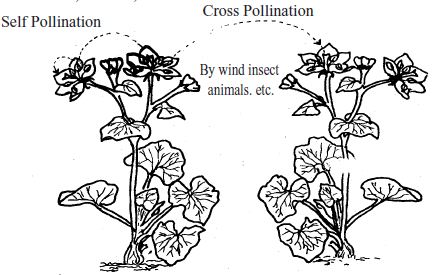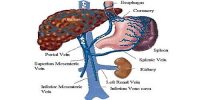Every fertile stamen contains an anther. Inside the anther develops the pollen grains. At one time the anther bursts and pollen grains are carried and attached to the stigma (of same flower, or flower of the same plant or flower of the same species of a different plant), by insect, air or any other agent. Process by which pollen grains are transferred from anther to the stigma is called pollination. Pollination of two types: I. self-pollination and 2. cross-pollination.
(1) Self-pollination: When pollen grains from the anther are transferred to the stigma of the same flower or a flower of the same plant is called self-pollination. In self-pollination the genotype (factors those control the characteristics of living beings) of two flowers remains alike. Self-pollination occurs in a small numbers of plants in nature. Self-pollination takes place in flower like Bean, Tomato, Commelina etc.

(2) Cross – Pollination: When pollen grains are transferred from the anther to the stigma of flowers of same species of a separate plant is called cross-pollination. In cross-pollination the genotypes of two plants have some variation, in nature, cross-pollination occurs in most of the plants. Examples of cross – pollinated plants are Paddy, Wheat, Maize, Mustard, Silk Cotton (Shimul), Madar, Mango etc.











